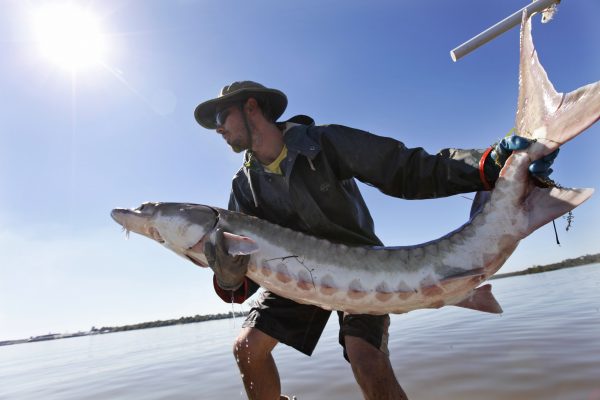


Gynogenesis and androgenesis are used to induce polyploidy, and can be valuable for improved animal production.

Mother of Pearl spoons with salmon roe (top) and sturgeon black caviar (bottom). Genome engineering techniques such as chromosome manipulation, gynogenesis and androgenesis are useful in developmental biology, reproduction, genetics and sex determination, and conservation-related studies, as well as to improve aquaculture production. 13(1), January 2021) – reports on a comprehensive review paper describing several research tools and their potential application in resource management, aquaculture and conservation of sturgeon populations. Trends in aquaculture and conservation of sturgeons: a review of molecular and cytogenetic tools. This article – adapted and summarized from the original publication (Chandra, G. In recirculation aquaculture systems (RAS), where the temperature, light, feeding regime and water quality are maintained at optimum levels, sturgeons attain maturity very quickly, up to twice as fast as in their natural environment. In-depth knowledge of embryological development is crucial for hatchery management, effective conservation and restocking programs of sturgeon. Numerous publications are available on sturgeon biology, conservation genetics, aquaculture, embryonic development and several other pertinent areas. But sturgeons need international conservation programs, and many existing populations have little chance to survive without artificial breeding and ranching programs. However, fishways and artificial spawning habitats are gaining importance in maintaining sturgeon populations in their natural environments. But species like the European sturgeon Acipenser sturio) is already extinct from the Guadalquivir, Rhine, Elbe and the Thames Rivers due to the combined high pressure of overfishing, blockage of spawning migrations and habitat degradation.Ĭonstruction of dams has adversely affected the migration of sturgeon. Many species of sturgeons are commercially exploited for their caviar, flesh and isinglass, and are one of the most endangered groups of vertebrates. Sturgeons are primitive fish and are often referred to as “living fossils.” Fishes of this order (Acipenseriformes) are found in the Atlantic, the Pacific, the Mediterranean and the Black Sea as well as rivers, lakes and inland seas of the Northern Hemisphere above the 30th parallel. Reviewing some of the main technologically innovative applications in sturgeon aquaculture and conservation, and further research needed for aquaculture, management and conservation programs. Technological innovations and needs for improved conservation and production


 0 kommentar(er)
0 kommentar(er)
